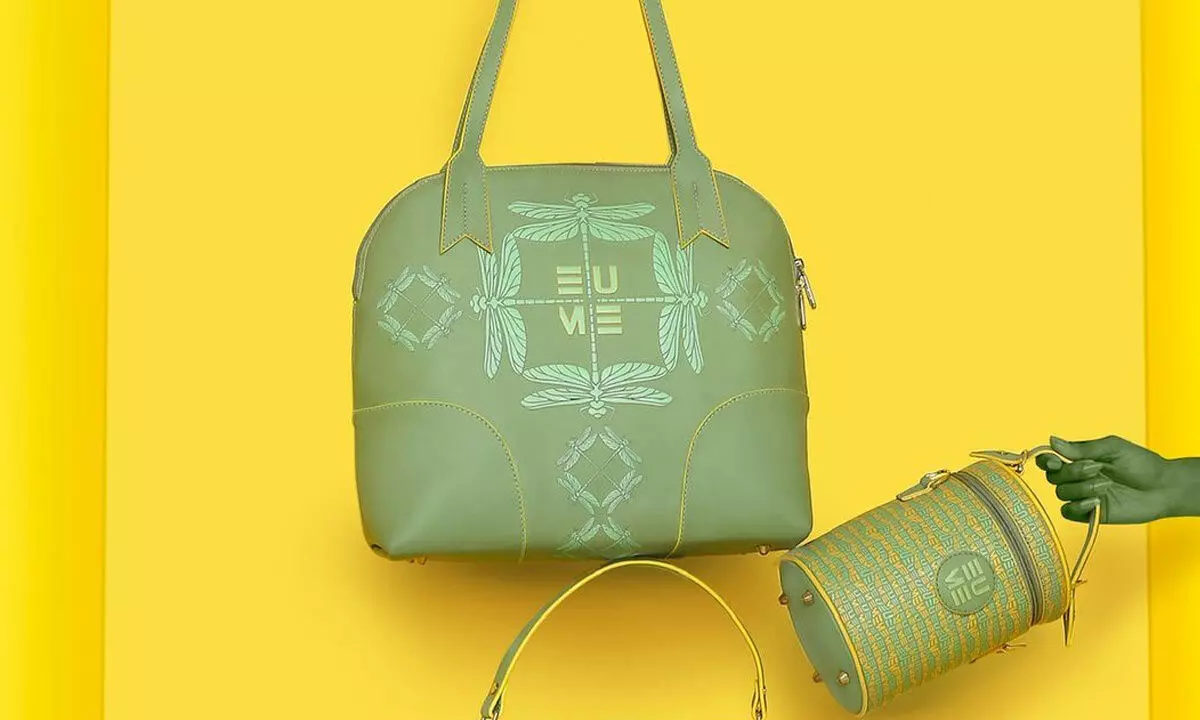Live
- Pakistan's Lahore remains world's most polluted city despite light drizzle
- Asha Nautiyal retains Kedarnath for BJP, to be back as MLA after 12 years
- India leads world in science, innovation research: Minister
- Flash flood in Indonesia's South Tapanuli claims two lives
- MahaYuti's electoral success testament to leadership of PM Modi, HM Shah: Ajit Pawar
- Unproven remedies: Tata Memorial Hospital slams Sidhu’s viral ‘diet cure’ cancer claim
- People voted in favour of development, rejected negative politics: CM Shinde
- Rajasthan bypolls: CM Bhajan Lal Sharma's governance credited with BJP's impressive show
- Aaditya Thackeray retains Worli defeating Shinde faction nominee Milind Deora
- Over 20 Injured in Multi-Vehicle Collision on Mangaluru-Bengaluru Highway
Just In
What are vegan handbags and how are they made?


What are vegan handbags and how are they made?
Despite the harm it brings to our planet, leather is in, and it has been for decades - it doesn’t seem to be going anywhere.
Despite the harm it brings to our planet, leather is in, and it has been for decades - it doesn't seem to be going anywhere. This is perhaps why designers and luxury brands are attempting to find more sustainable alternatives to the beauty and elegance of leather. Vegan handbags and clothing are now making their place in prominent fashion lines for their eco-friendly and affordable characteristics. However, many remain confused as to the making, process, and benefits of vegan bags. Naina Parekh is the mind behind EUME's revolutionary massager backpacks, which not only make travelling lighter, but relaxing too. She talks about the origin of the backpack, process and the benefits to the environment and more.
Vegan handbags - The process
Now there are plenty of raw materials from which vegan bags can be made - cork, pineapple leaves, apple peels, recycled plastic, other fruit waste, and of course, polyurethane. The processes, depending on the source material, are distinct and yet easy to execute.
For example, in the case of pineapple leaves or apple peels (category of food waste), the material is degummed and made into luxe mesh material similar to felt in terms of touch and feel. Synthetic leather, on the other hand, is made by bonding a plastic coating to a fabric backing; the processes vary and are what defines whether the leather stands to be eco-friendly. Polyurethane is observed to be a slightly less damaging plastic and is constantly being developed to reduce flaws such as the hazardous release of toxins during the manufacturing process. Typically, PU handbags are made with the help of fossil fuels.
A conscious purchase with benefits to the environment
Since the pandemic, consumers are making more conscious decisions about their purchases. They are eager to know the history, present, and impact of the products they add to their collections. Fashion enthusiasts, too, are not excluded from these efforts. Popular designers like Stella McCartney, Angela and Roi (from AngelaRoi), Moenn, and more are adapting to vegan designs. The vegan leather market is expected to grow to a whopping $ 85 billion USD by the year 2025 due to recent reports. This indicates that more shoppers are currently switching from genuine to faux leather, promising a new trend in the fashion world.
To willingly contribute to the protection of the environmental impact of leather, people need to know how vegan alternatives are better suited. Many consider leather a by-product of the meat industry - in simple words, it is what we call 'collateral damage. And even though the argument may seem logical, there are many things to consider from an economic standpoint. Take cows, for instance, it is remarkable yet terrifying how the industry has gravely exploited several uses for one animal - milk, meat, skin, horns. However, when a business boasts multiple profit streams, it is considered diversification, and not a by-product. Whether the leather industry contributes to these profit streams of 1%, 5%, or 20%, it seems to be enough to pursue, eventually leading to more slaughter and horror.
Vegan bags are cruelty-free
The other animals slaughtered for leather, the ones we don't particularly eat, are a by-product of direct motivation that lies outside the co-product idea. All in all, the environment is destined to bleed if genuine leather remains in production, whether it is to do with the carcinogenic chemicals used and transferred to our bodies, the horrific conditions for employees in the industry, or the harmful toxins expelled during production. Thus, the emerging trend for vegan handbags, clothes, accessories, and more. Not only are vegan handbags cruelty-free and sustainable, but, if maintained efficiently, are durable and most importantly not likely to cut a rather large hole in your pocket (as opposed to genuine leather). It will be interesting to live in a time where fashion experts render genuine leather outdated and 'so last season as they say. And vegan leather is our only saving grace if that is to happen. So, if you are to flaunt a fashion-forward accessory or bag in front of your friends, at least, you'll know you're saving the environment while you're at it.

© 2024 Hyderabad Media House Limited/The Hans India. All rights reserved. Powered by hocalwire.com






